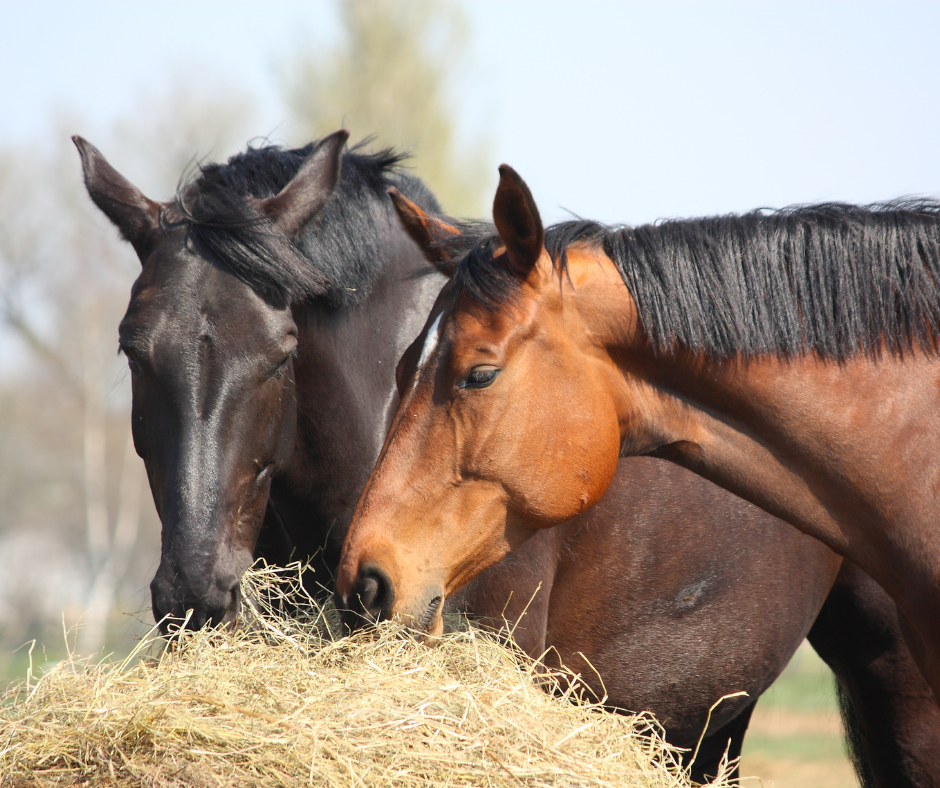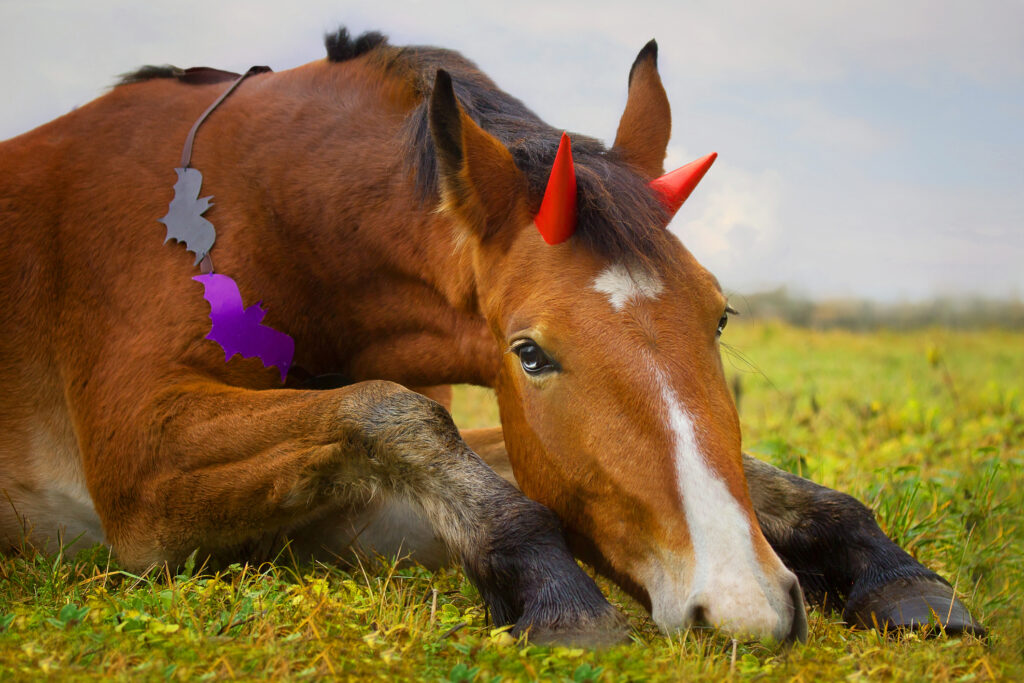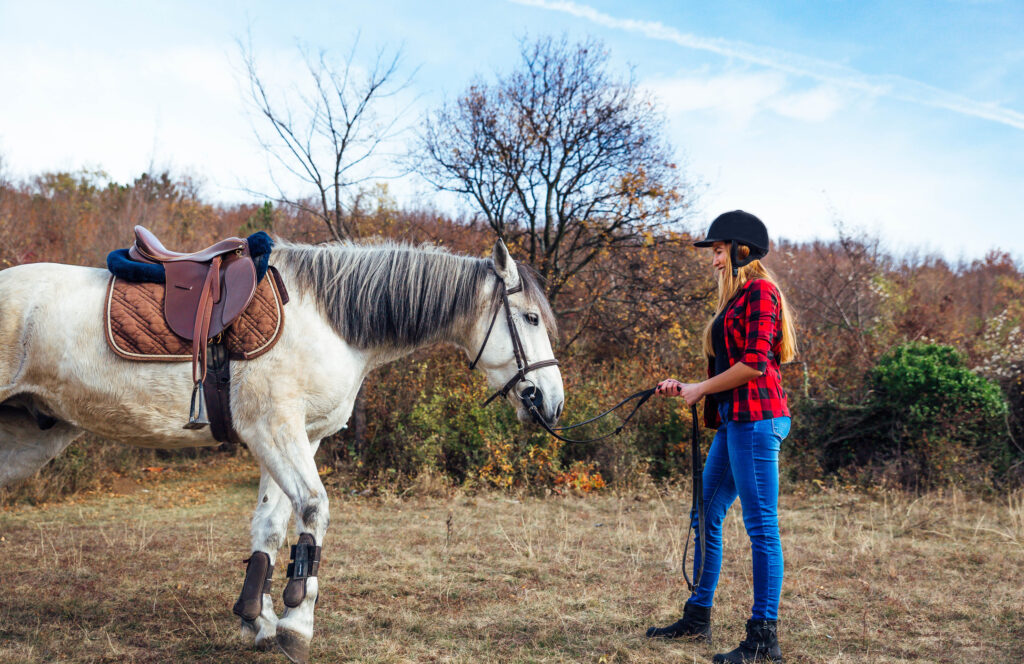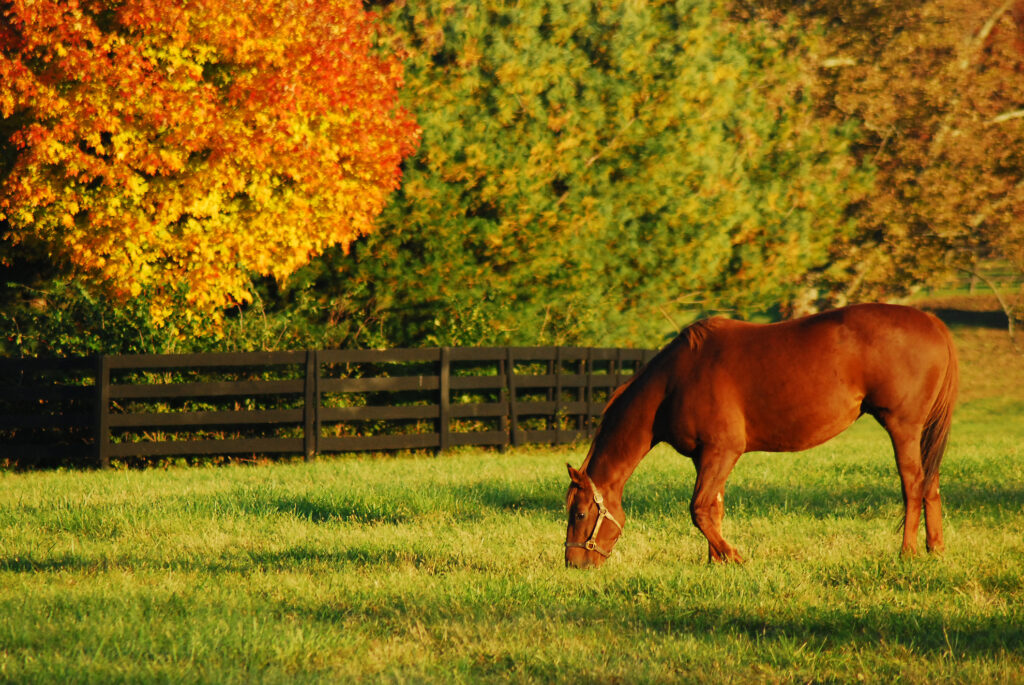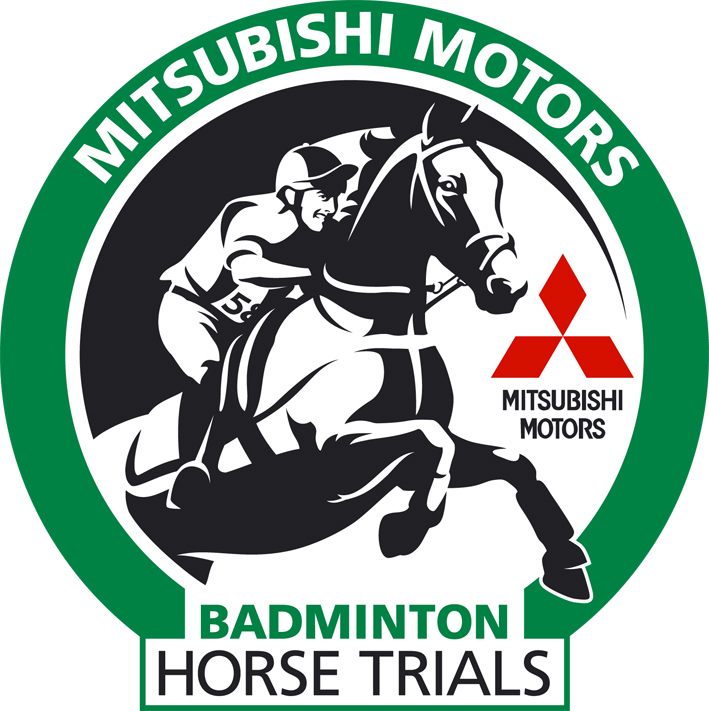Also, contamination and mould formation can result in huge hay wastage, meaning you may lose a large chunk of investment in buying quality hay for your horses.
Our top six tips for storing hay the right way include:
1. Storing on pallets to keep hay protected.
2. Keeping away from horses.
3. Maximising air circulation.
4. Removing mouldy hay.
5. Continuously rotating hay stocks.
6. Preventing Barn fires.
Now, let’s look at each of these points in detail.
Storing and Protecting Hay
Using pallets is a good idea whether you are keeping hays inside a hay barn or outside in an open space. Pallets keep the hay away from the ground, protecting it from moisture and providing good airflow, keeping it dry and fresh. It helps prevent mould and ensures that it does not lose crucial nutrients that your horses need.
Hay also attracts pests such as mice and rats, contaminating them with their droppings and urine. Make sure you examine them regularly and consider enlisting the help of your pets, such as your dogs and cats, to keep the pests away.
This can be particularly hard to manage if your hays are kept outdoors; hence, we highly recommend storing them in a hay barn. If you have no option but to keep them outside, get a good covering, such as plastic sheeting and tarps, and be sure to check them often.
Make sure they are sheltered from rain, ground moisture, and excessive sunlight. The hay must be kept dry, so if you live in an area where it rains a lot, it is a good idea to invest in a well-built hay barn.
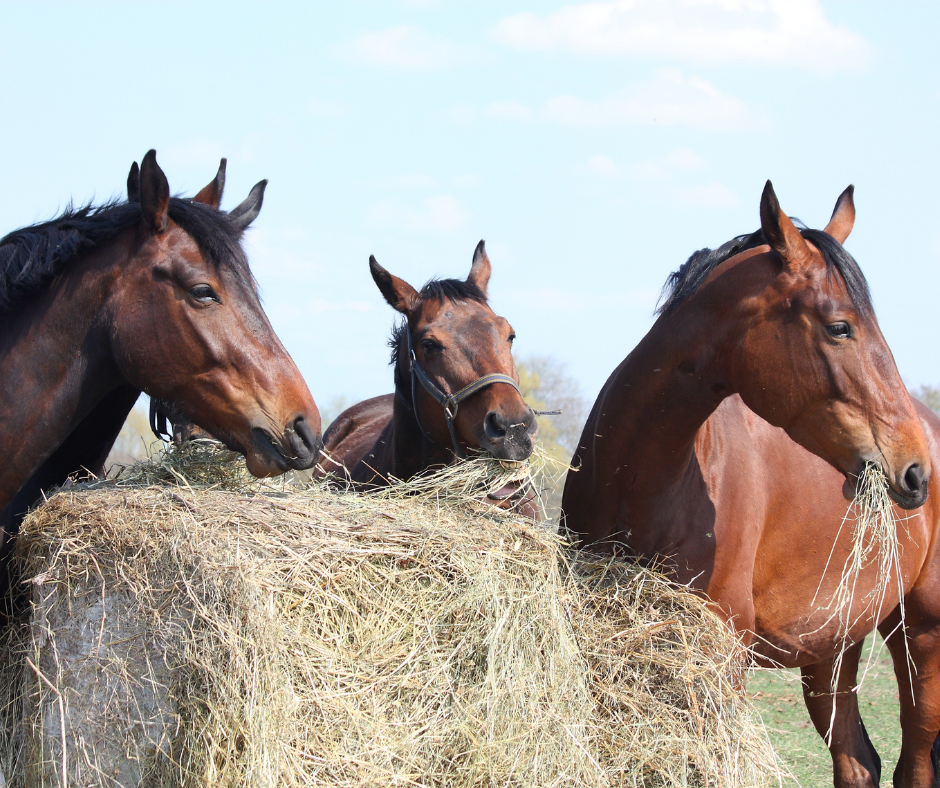
Hay barns are great investments to keep your hay dry and fresh. Ensure there are no leaking roofs or damaged parts where rainwater can enter and that the building is well-ventilated. It is best to invest in a well-built, durable, and high-quality hay barn from the beginning to avoid any issues.
At Jon William Stables, we have been manufacturing hay barns since 1983, meaning each barn has 40 years of solid experience built in. Visit our website to learn more about our hay barns range, prices, and specifications, or why not call us today on 01380 850 965 to discuss your plans with our experts.
Keeping Hay Away from Horses
Storing hay in your horse’s living space is not safe. Firstly, hay is highly flammable. Mouldy hay is also very unhealthy for your horses and can cause several health problems and affect their well-being negatively. Hay is also highly dusty, harming your horse’s respiratory health.
Another problem with large haystacks is that if they are not appropriately stacked, they can fall and cause injury to your or your horses. Ensuring they are stacked and stored away from your horses’ barn will prevent this.
Air Circulation
As we mentioned above, air circulation is crucial for hay preservation. It prevents mould and lowers the risk of barn fires, which are caused due to moisture content in the stored hays and heat production.
When storing away your hays, ensure they are stacked for better air circulation. There are several ways you can stack your hay bales, such as a single stack, pyramid stack, and mushroom stack. We suggest pyramid stacking, which consists of laying three bays along the bottom and stacking. Here are some other points to keep in mind when stacking hays:
- If storing outside, choose an area with good drainage with no chance of flooding.
- Keep at least 2 feet of space between the roof of your building and the top surface of stacked bales for good circulation.
- Keep a log of your inventory. Even if the hays are stored indoors in good condition, they will eventually lose their nutrients and quality. Keeping a record means you will know which hay bales are the oldest and should be used first. A good tip would be to store your old hay upfront to access them easily.
- When stacking, ensure the bottom layer is always wider than the top, with each level stacked with fewer bales. Ensure no bale is hanging over the edge to prevent it from falling.
Remove Mouldy Hay
When there is too much moisture, your hay will most likely mould.
If you do find mouldy hay, remove it immediately, and check your storage area and the building to ensure there are no damages or any other issues that may have caused this.
Sometimes, the problem could be the quality of the hay itself. We suggest buying from a producer who can prove their hay is good quality. Check the hay bales thoroughly and ensure no moisture, mould, or heat is inside.
Continuously Rotating Hay
Continuously rotating and ensuring the most recently purchased hay is stacked at the back and old at the front will help minimise hay wastage. But make sure you keep an eye on the newer hays stacked at the back, and as mentioned above, make sure to remove any mouldy and contaminated hay before it becomes a bigger issue.
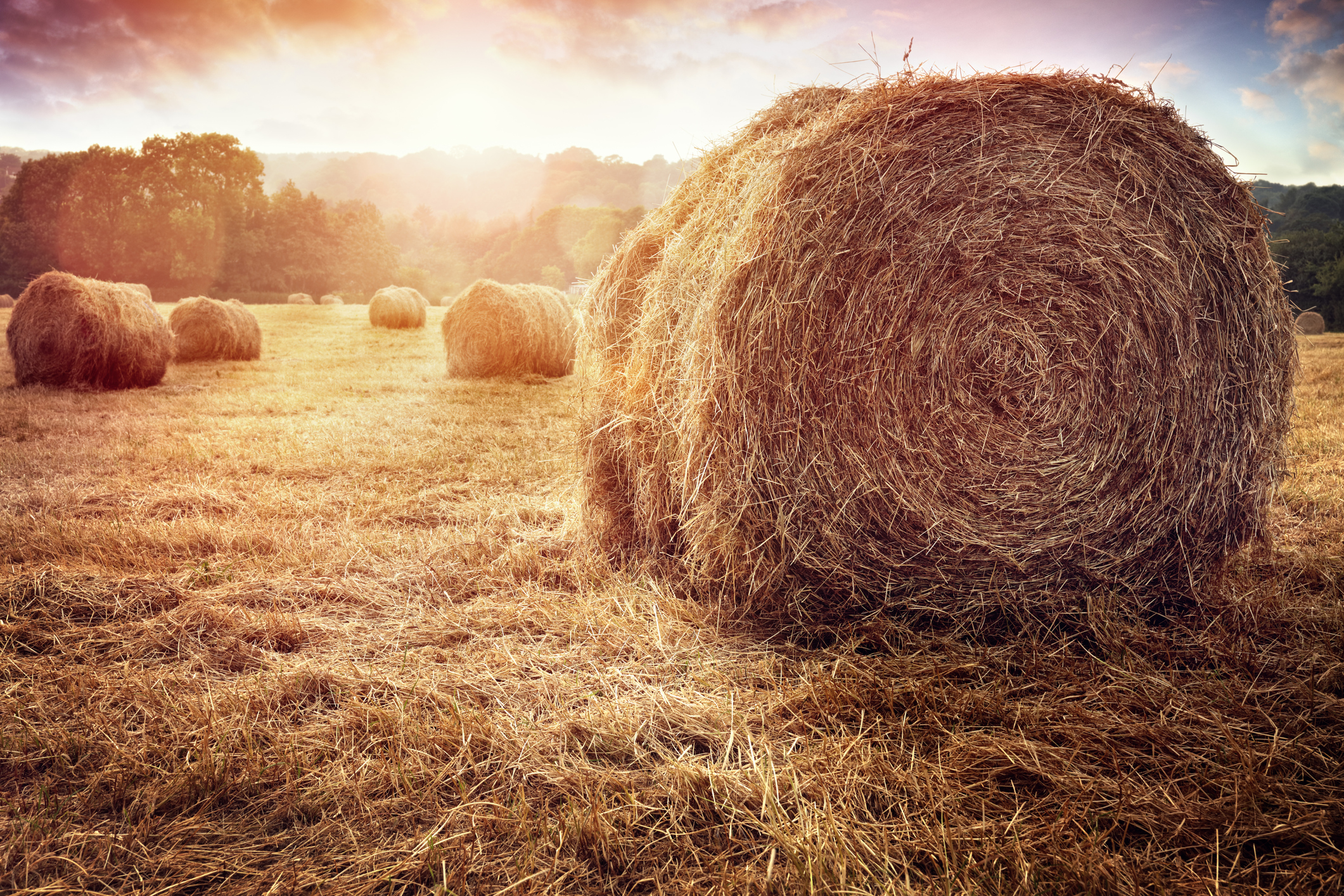
Preventing Barn Fires
As mentioned earlier, hay is highly flammable, and the unfortunate tales of barn fires are all too common.
Barn fires not only pose a threat to your fields and structures but also endanger valuable assets like horse feed and your hard-earned investments.
Although barn fires could be caused by poor air circulation, we have put together some crucial steps to prevent them from happening.
- Make sure your hay is dry before storing.
- Remove hay from fields as soon as possible after harvesting.
- Ensure it is stored away from chemicals, fuels, or livestock equipment.
- Store haystacks at least 10 meters apart
- Make sure your haystacks are not too close to the roof lighting.
- Ensure any light bulbs in the building are LED bulbs rather than Halogen.
Hay Barns for Effective Hay Storage
Although a hay barn can initially seem like a costly investment, we assure you it comes with many benefits, such as better feed for your horses, convenience, stable management, and, most importantly, minimised hay wastage, resulting in considerable savings.
Jon William Stables supplies a range of high-quality timber hay barns which can be customised to suit your requirements. Download our latest brochure or contact us on 01380 850 965 to talk to our equestrian building experts.
